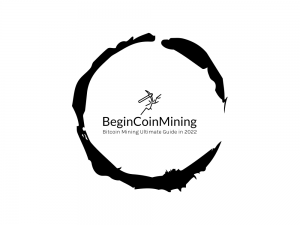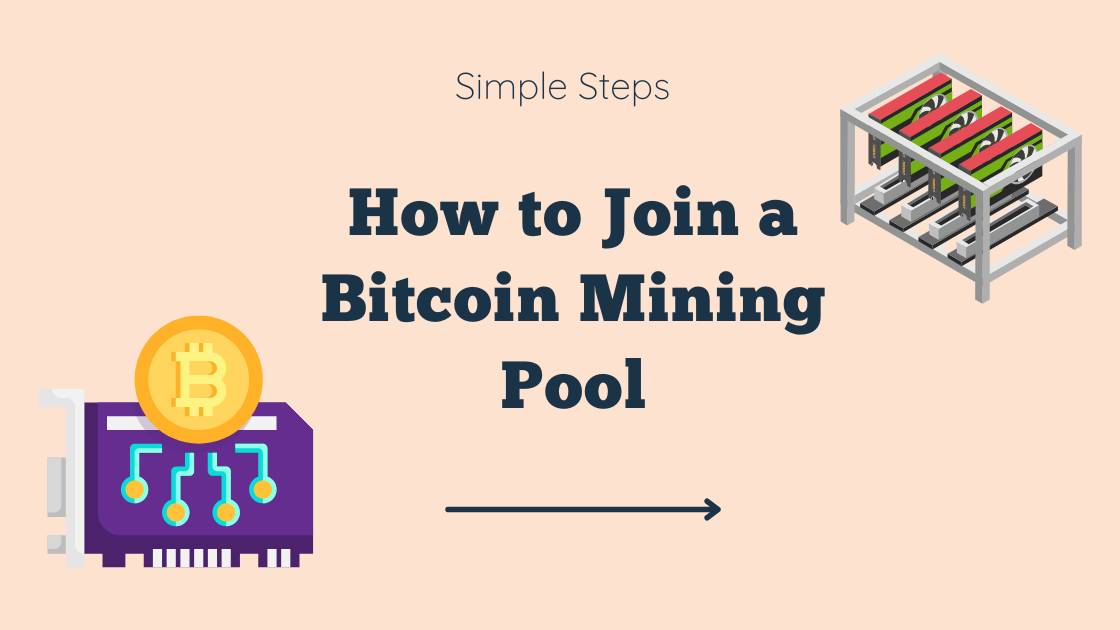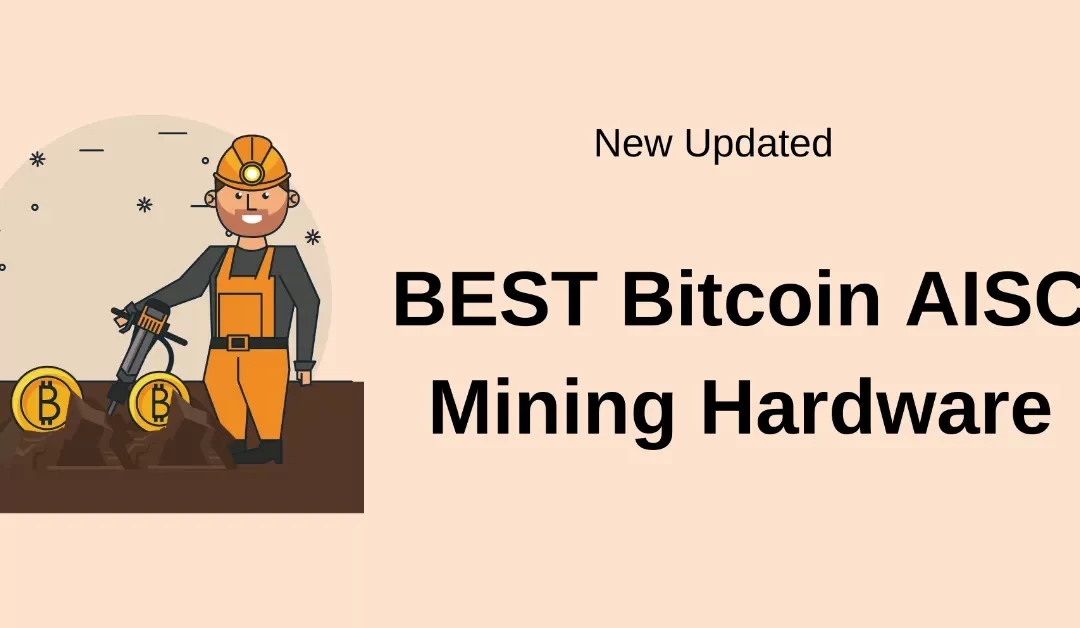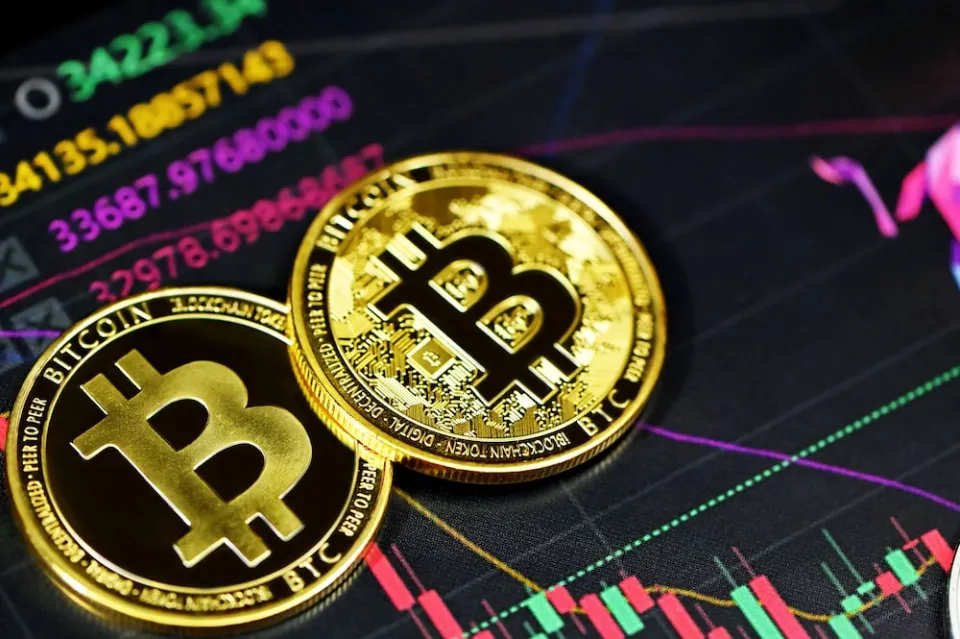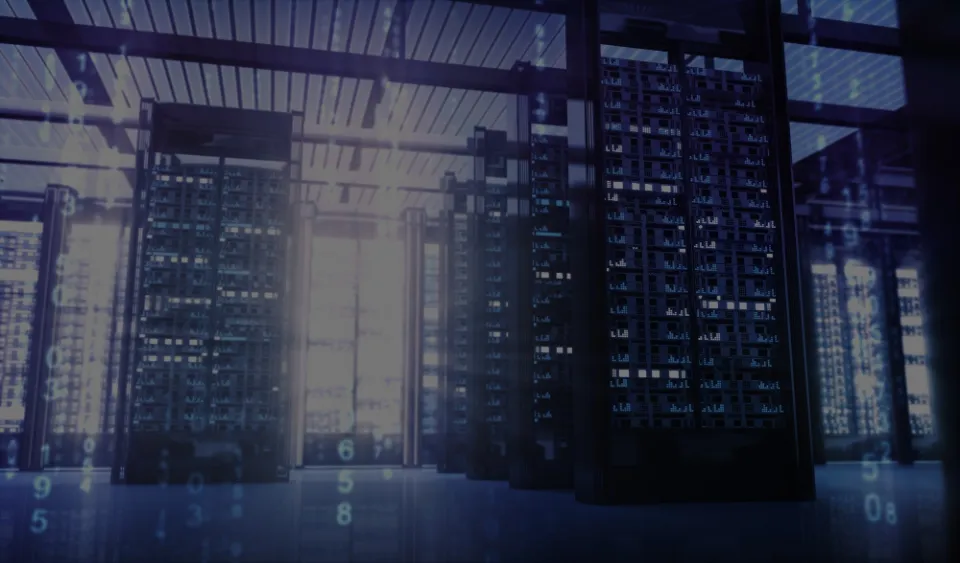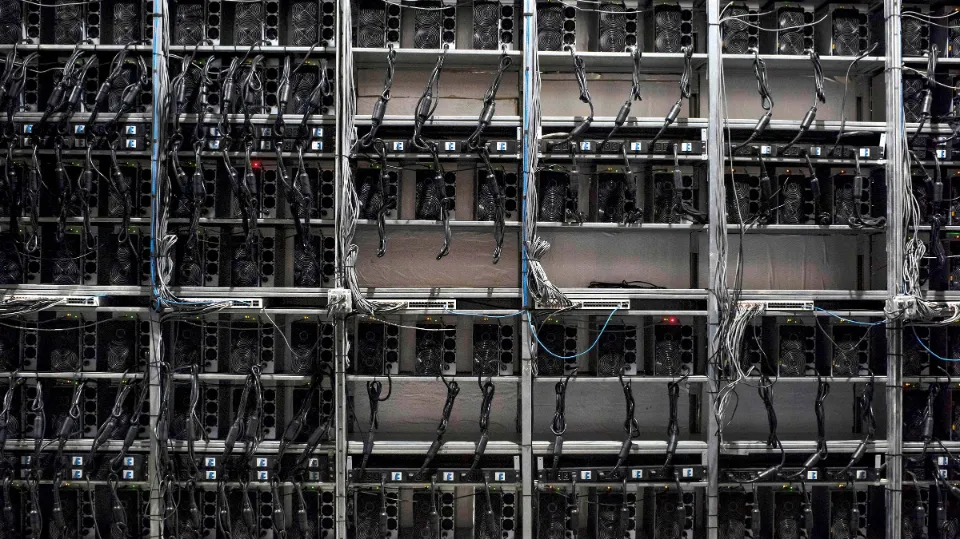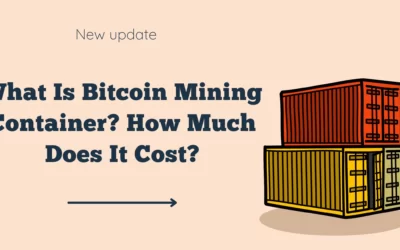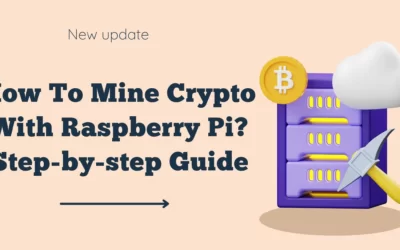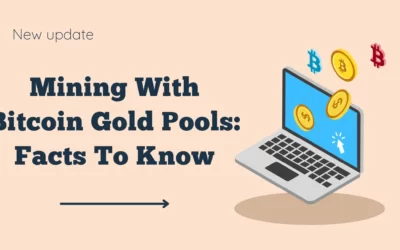Explore how to join a Bitcoin mining pool in 2022 to boost your earnings whether you have high-end mining gear or you are mining with a simple GPU.
Bitcoin mining has changed over time, requiring more processing power than it did previously. To find and solve just one block and receive your mining reward as a solo miner would take a significant amount of time. Mining pools fill this need by making it simple for miners who want to collaborate with others to do so. You can explore Bitcoin mining pools to increase your earnings regardless of whether you are mining with sophisticated equipment or a basic GPU.
Here are the basic steps for how to join a bitcoin mining pool:
- Choose a best bitcoin mining pool you want to join.
- Put the pool’s stratum addresses into your mining program.
- Connect a wallet to which payments from the pool will be made.
- Set up your machines to work with the selected pool.
For more specific information on how to join a bitcoin mining pool, continue reading.
What Are Bitcoin Mining Pools?
In order to solve the mathematical equations and locate the blocks on the network, Bitcoin mining pools are made up of multiple Bitcoin miners using specialized mining hardware. Users in a mining pool typically pool their computing resources to solve one problem at a time, which helps to solve the problem more quickly and effectively. Because of this, pool miners can receive payments at any time in accordance with the proportion of their computational power that they contributed. Simply put, you will be able to earn more if you contribute more power or have better mining equipment.
The fact that you can join a pool with any supported hardware is one of the most amazing things about Bitcoin mining pools. It doesn’t matter if it’s a processor, graphics card, or specialized ASIC machine; you can team up with others and attempt to solve a block collectively.
How to Join a Bitcoin Mining Pool?
In reality, joining a mining pool is a quick and simple process that doesn’t involve any tedious steps to worry you. You can follow the steps mentioned below to start mining through a pool:
- Use mining pool platforms to locate Bitcoin mining pools and join them. You can look at Slush Pool, Bitfury, and Btc.com as some of the most well-known mining pools.
- To get started, either download and install the pool’s stratum address provided in the mining software, or use your preferred mining program to do so.
- Set up the mining app and customize the settings to your tastes.
- In order to receive payments whenever you want, enter your wallet address.
As you can see, joining a mining pool is a simple process with no challenges.
Read More: How to Mine Bitcoin on iPhone: Best Bitcoin Mining Apps for iPhone
Different Types of Mining Pools
If you want to join a mining pool, you should take into account the various types that are available. See how you can pool your resources with others to mine Bitcoin by looking at the information below.
Mining Clients and Platforms
This is the time-honored, simple, and quick way to sign up for a mining pool and get started on your quest to become a profitable miner. There are many online platforms that let users immediately join mining pools. Depending on what coin is being mined, how many miners there are, and what the rewards are, you can pick from a variety of pools.
All you need to do to begin mining is download their mining client (if they have provided it) or enter their stratum address in the mining software of your choice. Connect your wallet address so you can periodically claim your rewards.
Cloud Mining Pools
Cloud mining pools will serve you the best if you don’t already have any mining equipment and don’t want to deal with the hassle of purchasing and configuring it. As the name suggests, cloud mining pools operate entirely online without requiring any physical mining equipment from you. You can sign contracts and buy processing power from cloud mining services.
With a contract that lasts a week, several months, or even a full year, you can use your cloud mining power to join a Bitcoin mining pool. Of course, you won’t be responsible for paying for electricity, maintenance, or other costs. Rather, all of the cloud mining services that are offered to you are covered by your fee.
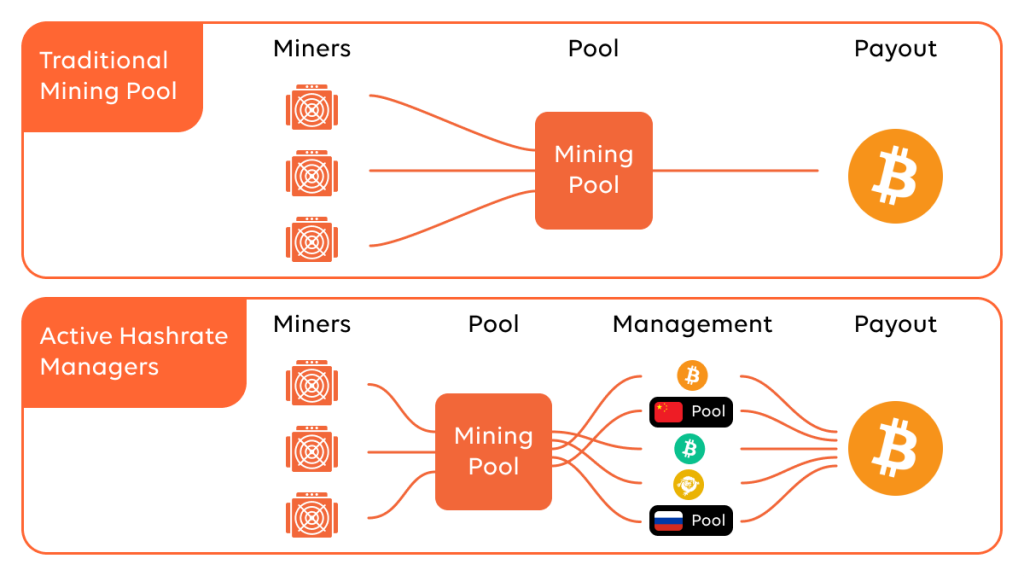
Source: Compass Mining
Physical Mining Farms
In contrast to mining farms, where miners physically join forces with their hardware to start mining, mining pools are places where miners collaborate online. Large data centers frequently house mining farms in order to properly house the hardware in a suitable environment. The majority of mining farms also use mining pools to locate blocks comparatively more quickly than solo mining. The only drawback is that, if you don’t live in an area with a lot of technological advancement, it might be challenging to locate a mining farm close by.
What to Consider When Joining Bitcoin Mining Pools?
If you are interested in cryptocurrency mining and have made the decision to give it a try, you might consider joining a mining pool where your chances of receiving compensation for your efforts are higher. In spite of this, picking a mining pool can be difficult because there are many options and a number of questions to consider.
KEY TAKEAWAYS
- To participate in a mining pool, you might need to invest in specialized, pricey equipment.
- It is crucial that mining pools assign tasks fairly and are open about how they operate.
- Because they can reduce your profits, payout and fee schemes are crucial.
- The hashrate of the entire mining pool matters more than its size, but you can also evaluate the pool’s credibility based on its size.
Learn what to look for in a mining pool and how to choose the one you should join.
Choose Your Mining Pool Equipment
If your device is capable, you can mine cryptocurrencies on a variety of platforms. A central processing unit (CPU) or graphics processing unit (GPU) is required for the majority of mining applications. Due to the increased time and energy required to mine a coin, GPU and CPU mining, however, is no longer as profitable as it once was.
It’s best to use an application-specific integrated circuit (ASIC), which is a mining device made especially for mining cryptocurrencies. The computational power of multi-GPU computers designed specifically for mining is also an option, but they are still significantly less powerful than ASICs.
Read More: ASIC Miner vs GPU Miner
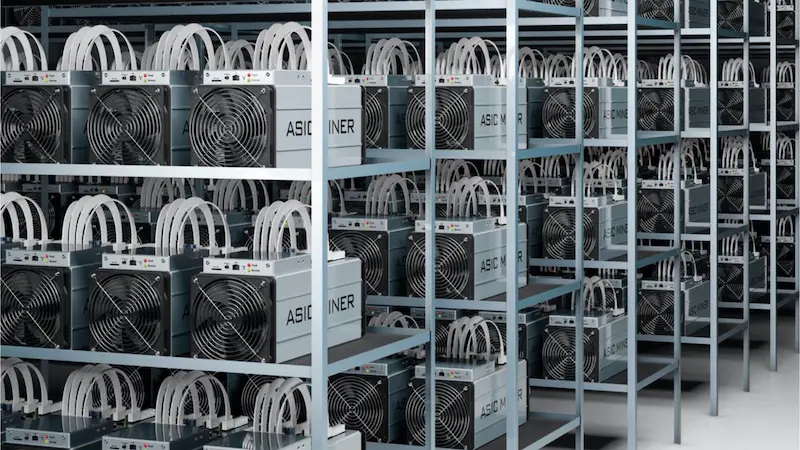
ASICs can be purchased from online merchants in a variety of forms. Understanding hashrate—the speed at which an ASIC can carry out mining operations—is essential when selecting an ASIC. You can mine more quickly with a higher hashrate, but you’ll have to pay more up front. Energy consumption is another thing to think about.
For instance, the Goldshell KD5 ASIC costs almost $65,000 and has a hashrate of 18 Th/s (terahashes per second), but it only uses $200 in electricity on average each month. An older model, the Goldshell KD2 ASIC, has a hashrate of 6 Th/s and only consumes about $71 per month—it is priced around $27,000.12
The older model is “cheaper,” but you’ll be hard pushed to keep up with miners who have the more powerful rigs.
Additionally, make sure your network connection to the pool server is at least the required minimum speed. Furthermore, cooling the space where your miner is will significantly increase your cooling bill because it will produce heat.
Read More: Bitcoin Mining Rig: Buying or Building? What to Buy & How to Build?
Ensure the Mining Pool is Transparent
In order to maintain honesty and reliability among the pool’s users, the mining pool operator must operate fairly. You should, for instance, check to see if the total hash rate reported at the pool level appears to be accurate. In order to make sure that mining is worthwhile of your time as well, you should also look for indications that the pool operators use lower payout schemes.
Consider using a different mining pool if the pools you’re considering lack a real-time dashboard that provides transparency.
Review the Pool Payout Scheme
Avoid pools with higher payment thresholds if you are using low-end hardware mining equipment. Your computational output will decrease, which will decrease your income.
For their payment schemes, many pools employ the pay-per-share (PPS) or pay-per-last-n-shares (PPLNS) methods. You are paid a set amount for each share of work you submit if the pool makes use of PPS. In most cases, you get paid after submitting your share.
A coin is awarded to the pool whenever a block is mined by PPLNS, which pays miners using a weighted system. Your number of shares is divided by the pool’s total number of shares, which is then multiplied by the block reward, the cryptocurrency payment made for adding a new block to the blockchain.
Full pay-per-share (FPPS), which includes transaction costs in the calculation, and pay-per-last-n-groups (PPLNG) are additional payout options. However, PPS and PPLNS are the two that are most frequently used.
Read More: PPS Vs FPPS Vs PPLNS Vs PPS+: Which Mining Pool Payout Is Better
Look for Mining Pool Stability
A pool’s stability should be evaluated before joining, as this is a crucial factor. If there are any pool outages, it will have an impact on your ability to mine and your earnings. This is referred to as stability. Generally, you’ll need to find information about the pool’s history, such as:
- Does the pool use an encrypted connection, such as a VPN, or just an open connection?
- Is it susceptible to DDoS attacks, which are more frequent when pooling activity is high?
- Has the mining pool defended itself against any assaults?
- Has there ever been a prolonged downtime at the pool?
Many pools have support pages in place where you can find discussions, tips, and announcements that can clue you into stability issues in the past.3
For reports of pool outages, you can search other online sources, but they might not always be reliable. Since cryptocurrency is still relatively new, it can be challenging to locate trustworthy, valid sources.
Review the Pool Fees
When miners cash out their profits, many mining pools impose a pool fee that can range from 1% to 5%. However, they might not have the necessary infrastructure, security, or privacy. Some pools also operate without charging any fees. In order to decide whether to pay a pool fee and how much, be sure to evaluate this aspect in advance.
Weigh the Mining Pool Size and Power
The amount of coins mined over time in a mining pool is inversely correlated with computing power. A pool’s size can correspond to more or less computing time, but generally speaking, the more participants it has, the faster it is to mine.
A small collection of the newest ASIC miners will perform better than a large collection of slower or older machines. Which mining pool performs better is determined by the total hashrate of the mining pool.
Due to their greater computing power, larger pools have a higher probability of producing blocks, whereas smaller ones typically take longer. In some ways, the size of a mining pool can also indicate how trustworthy it is. For instance, a pool with a large number of active miners may be a reliable one.
Supported Crypto Coins
It is crucial for you to research which crypto assets are mined by the mining pool you intend to select because we are discussing Bitcoin mining pools here. There are pools that support Ethereum, ZCash, and many other cryptocurrencies, but it is preferable to use Bitcoin or any other coin with a higher margin.
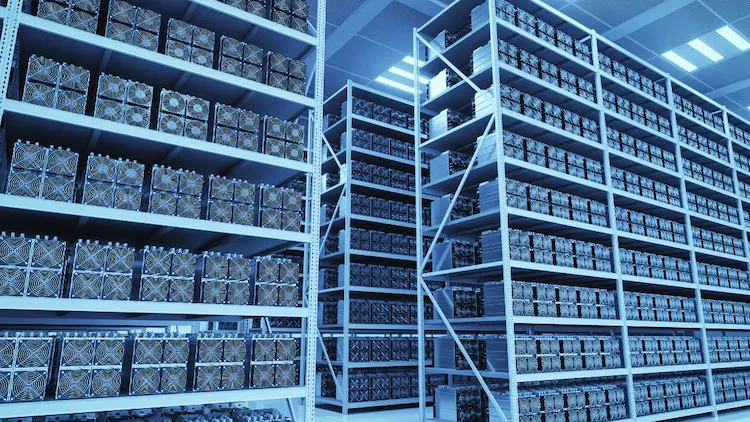
Best Bitcoin Mining Pool: Simple List
The list below details the biggest Bitcoin mining pools:
- F2pool: Chinese citizens run F2Pool. On average, 15.6% of all blocks are mined.
- Antpool: The Chinese company BitMain owns the mining pool Antpool. Of all blocks, Antpool mines 15% of them.
- ViaBTC: A mining pool called ViaBTC has only been operating for about a year. It mines about 10% of all blocks and is aimed at Chinese miners.
- Poolin: A public pool called Poolin mines about 11% of all blocks. Despite being based in China, they have an entirely English-language website.
- Binance Pool: The Malta-based exchange Binance owns and runs the quickly expanding pool known as Binance Pool. As one of the world’s largest cryptocurrency exchanges, Binance is actively extending their presence in mining. About 11% of all blocks are mined by Binance.
- BTC.com: A public mining pool called BTC.com, which anyone can join, mines about 6.5% of all blocks. We strongly advise signing up for Slush Pool or Poolin instead.
- Foundry USA: As you might have guessed, German blockchain company Foundry Digital owns the Foundry USA pool, which is based in the US. They supply 17% of the world’s computing power.
- Slush Pool: Slush Pool, which currently mines nearly 6% of all blocks, was the first mining pool. Despite not being one of the biggest mining pools, Slush is probably one of the best and most well-liked.
- SBI Crypto: Currently, this Japanese pool mines about 2.6% of the blocks.
The comparison table above is only meant to be used as a quick guide. A pool’s location is not all that important. Even if the mining pool is based in China, you could connect to a server in the US, for instance, because the majority of pools have servers in every nation.
Read More: 26 Best Free Bitcoin (BTC) Mining Websites
Choose Your Mining Pool
After weighing the pros and cons of various mining pools, you ought to feel fairly confident choosing the one that suits your needs and your budget. It’s important to remember that, if your computer has a compatible GPU, you can join a mining pool using nothing more than that, though your profits will be much slower. GPU mining is a respectable way to use equipment you already own for small rewards if you only have a few dollars a month to spend. If you choose your mining pool wisely, a mining pool can even help you increase those rewards.
Conclusion: Join a Mining Pool Now
Joining a mining pool and offering your collective computing power will ensure consistent payouts and rewards, so doing so is a no-brainer. The best part is that getting started only takes a few minutes and that it is comparatively simple and follows a similar structure to solo mining. In order to start earning Bitcoin, start investigating the best mining pools and the organizational principles they adhere to.
Marketplacefairness.org only provides information; nothing on the site should be interpreted as a recommendation to buy, sell, trade, or use a particular exchange for cryptocurrency. The needs of each individual may be different from those of the author, so please refrain from using this website as investment advice, financial advice, or legal advice. This article contains affiliate links to our partners, from whom we may receive payment.
Mining Pools FAQs

Can Anyone Join a Mining Pool?
Anyone can join a mining pool if they have the necessary tools and the desire to mine cryptocurrencies.
How Do I Join My Mining Pool?
Based on your criteria, select your pool and enter the stratum address in your software. Connect your wallet, set up your client, and then begin mining.
Can I Mine Bitcoin Without Joining a Pool?
Yes, you can, but it’s much more profitable to join a pool since the difficulty of mining bitcoin rises with the number of coins you receive. Unless you have the funds to create your own or purchase numerous cutting-edge ASIC miners, it is best to join a pool in order to be competitive.
Read More: How to Build an ASIC Miner
How Do Mining Pools Share Rewards?
In layman’s terms, a pool that receives payment for its mining activity divides the payment (or coin) into shares and distributes them according to the amount of work that each member contributed to the pool. The larger your share, in other words, the more work your computer contributes to the mining pool.
Is Joining a Bitcoin Mining Pool Profitable?
Joining a pool is a much more profitable way to mine Bitcoin, especially since its difficulty increases with every coin awarded. Unless you have the funds to create your own or purchase numerous cutting-edge ASIC miners, it is best to join a pool in order to be competitive.
Read More: Is Bitcoin Mining Profitable? Is it Still Worth It?
Is It Easy to Join a Mining Pool?
The pool is free to join and the process is simple. You must first buy Bitcoin mining equipment. The next step is to download mining software. I advise looking at our hardware and software guides if you need assistance making a decision.
Do Mining Pools Cost Money?
Miners should consider how each pool divides its payouts among its members and what fees, if any, it levies before choosing to join a particular pool. Typically, pools may charge between 1% and 3% as pool fees.
Is It Better to Solo Mine Or Pool Mine?
While solo mining can generate huge rewards, it doesn’t offer the same reliable income as mining pools do. The likelihood of finding a block is increased because pool participants pool their computing power, so you will probably receive payouts more frequently than if you were mining alone.
